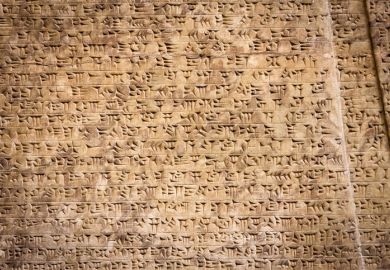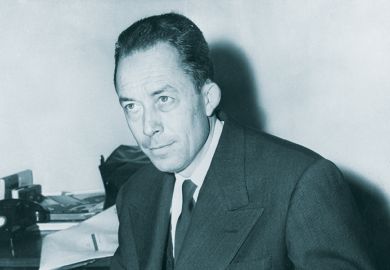Paris in the early 1970s; the Queen and her husband on a state visit, culminating in a huge reception in the Palace of Versailles. Of course, the Immortals, the members of the Academy, were there; in full fig. The newest was a famous essayist who, in theory at least, earned his bread in my sector of Unesco.
The ceremonies ended with a regal and presidential procession down a central lane in the crowded Galerie des Glaces. My very plump and smallish colleague looked like a pouter-pigeon, in the pride of his multi-coloured, long-tailed costume.
But anxious: "Monsieur Hoggart. Will you please introduce me to your duke of Edinburgh?'' With difficulty I steered him to the front row and indicated to a factotum wielding a long white rod that the academician would like to be introduced to the duke, who was just approaching, with occasional chatty pauses.
It worked. The duke stopped and remarked: "That's a remarkably h ndsome uniform. Where's it from?'' "The Academy, Sire!'' "What Academy?'' I wished I had been near enough to suggest: "Dollar Academy'', or some other name the consort might recognise.
The new academician staggered back and managed only: "Monsieur Hoggart. That is the strangest exchange of my life."
I recount that incident partly because I have waited for years for a suitable excuse to do so, partly because it made me feel even more than usually ironic towards National Academies of Letters, and partly because the American Academy (whose centenary is celebrated in this book) owed much in its origins to the French example. Especially in its early years, where its sense of its own great symbolic and iconic importance was high.
Is this surprising? Yes; at least to John Updike who (and this is also surprising) contributes the foreword here: "The American grain somewhat resists formal organisations devoted to the arts.'' Well, perhaps a couple of hundred years ago. But from at least the mid-19th century until the mid-20th, the American approach to public aspects of great thinking - the arts, higher education, religion - has been formal, full of portentous circumstance, high-minded, wing-collared, much nearer in style to the European continent than to "the Mother Country''.
The university in upstate New York, where I worked for a year in the late 1950s, had an annual open day at which the academic staff deployed (chiefly for the benefit and encouragement of well-heeled local donors) their great learning. I spoke on modern English literature. It was, I would like to think, quite interesting.
Afterwards, my closest American friend admonished me: "You sounded too relaxed. You weren't lecturing; you sounded as though you were just talking to them. They like their professors solemn, reading their texts with some gravitas, behaving like professors."
I must have forgotten the advice because a few years later I gave an annual commemorative lecture at Columbia University, New York. Lionel and Diana Trilling were in the front row. Afterwards we walked together to the president's residence for dinner. Lionel said he had enjoyed my talk and went on: "I couldn't speak directly like that. I have to read my text. An American academic cannot assume that degree of intimacy, that use of 'we' to the audience, on a public occasion.'' There it might have rested, this sense of the artistic and academic formalities of America. But America always upsets the very preconceptions she has encouraged. In 1980, the University of New Mexico at Santa Fe celebrated with an enormous conference the 50th anniversary of D. H. Lawrence's death.
There were row on row of Roman Catholic nuns, teachers of modern literature in colleges across the southwest. By some almost perverse casting, the first "keynote'' lecture was to be by that brilliant, occupationally loose-cannon, Leslie Fiedler. He began: "Let's face it. Lady Chatterley was sucked, ****ed, buggered and blown." Blown, too, out of the windows were American academic pieties. I looked at the nuns. They imperturbably continued to take notes.
Such reflections were set off by this large and handsome record of the American Academy's life so far. It is cleverly constructed; each decade given to a living member. Since they are all good writers, they cannot be dull, though the first half-dozen have to keep straight faces. There is much to poke fun at - enshrined chiefly in the pomposity (and the appalling poetry) of R. U. Johnson, the early and long-serving secretary. Yet underneath they all feel that, pomposity or not, there was and is something well worthwhile in the idea of the academy in itself.
They are right. It disliked experiment, shunned politics and was from the start silent about the galloping crass materialism Henry James excoriated. It would not have women or black members, blindly hated communism and was muddled about censorship. It did not greatly question the often polluted sources of its handsome donations. Nevertheless it stood, however stuffily much of the time, for the importance of art.
The change in the authors' styles here comes with Norman Mailer's essay on the late 1950s and 1960s. He draws a line under the old manners - but politely, dryly, ironically, like a tiger admitting there is after all something to be said for dressage horses.
Thereafter the mood becomes more self-critical. Lewis Mumford's presidential address rejected the academy's non-political stance and demanded it take a position against the Vietnam war. Some cheered, others resigned.
Here another personal memory comes to the surface. Just before the Congress for Cultural Freedom was shown to be sponsored by the CIA, it held a seminar in Berlin. A remarkable occasion, not least in having Mary McCarthy (elected in 1988, and only the fifth woman member) mock the claim that, though in many ways a bad example of insufficiently corralled capitalism, America is at least deeply self-critical: "Sure. It's like the mirror in the whorehouse ceiling. We do it and we watch ourselves doing it.'' By that time the academy had come a long way from its original limitations.
It has been a long trail and all in all an admirable one. It illustrates something of the weaknesses and the strengths of American intellectual life; but especially of the American capacity to learn from mistakes, to be open towards itself.
Do the British need an American-style Academy? I doubt it. We would almost certainly produce narcissistic squabbles of the sort described here. I am not so sure that we would speak as collectively and as well, as is also shown in this book, about where our own society is going wrong. That remains our deficiency.
Richard Hoggart was formerly warden, Goldsmiths College, University of London.
A Century of Arts and Letters: The History of the National Institute of Arts and Letters and the American Academy of Arts and Letters
Editor - John Updike
ISBN - 0 231 10248 8
Publisher - Columbia University Press
Price - £31.95
Pages - 360
Register to continue
Why register?
- Registration is free and only takes a moment
- Once registered, you can read 3 articles a month
- Sign up for our newsletter
Subscribe
Or subscribe for unlimited access to:
- Unlimited access to news, views, insights & reviews
- Digital editions
- Digital access to THE’s university and college rankings analysis
Already registered or a current subscriber? Login



